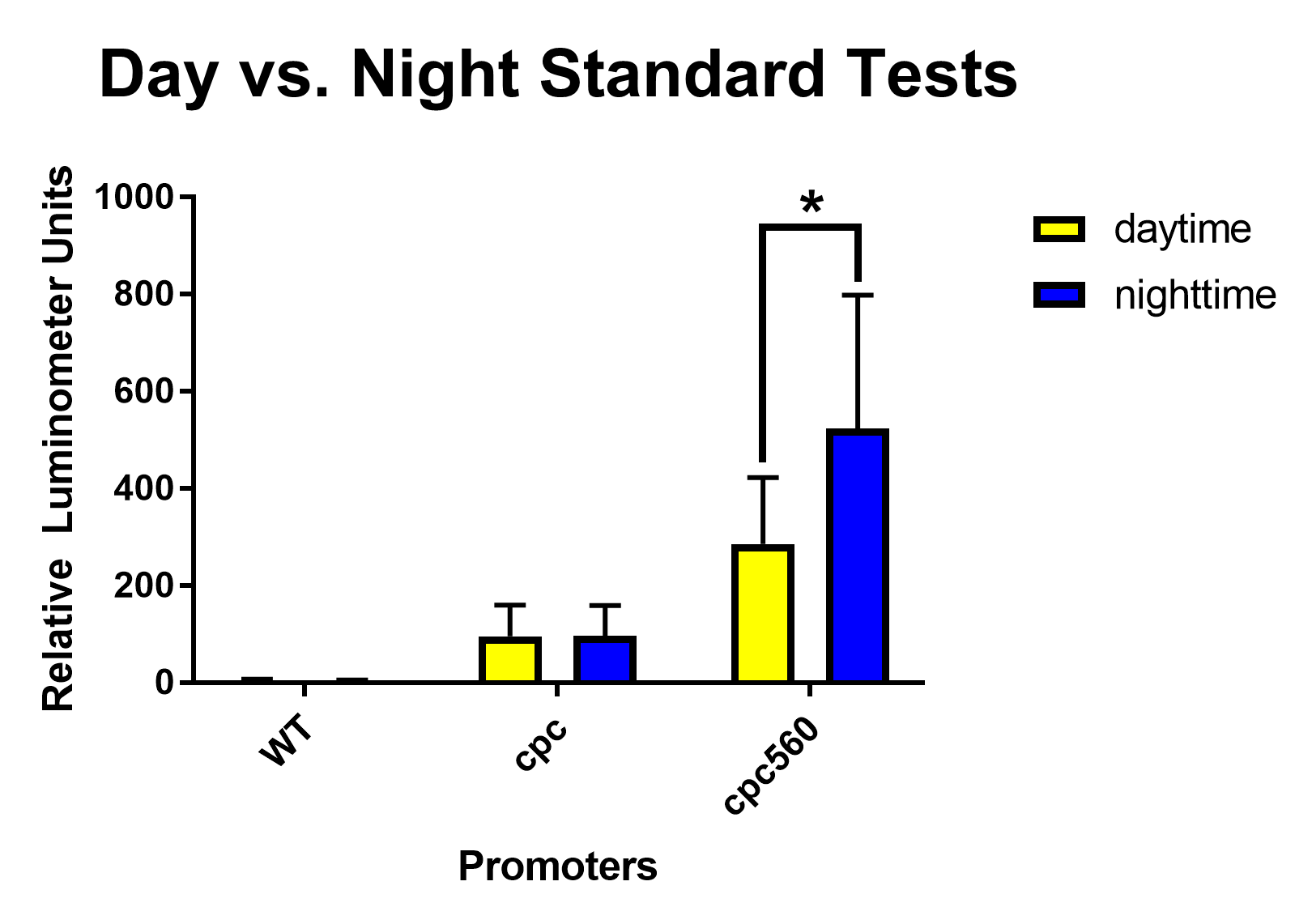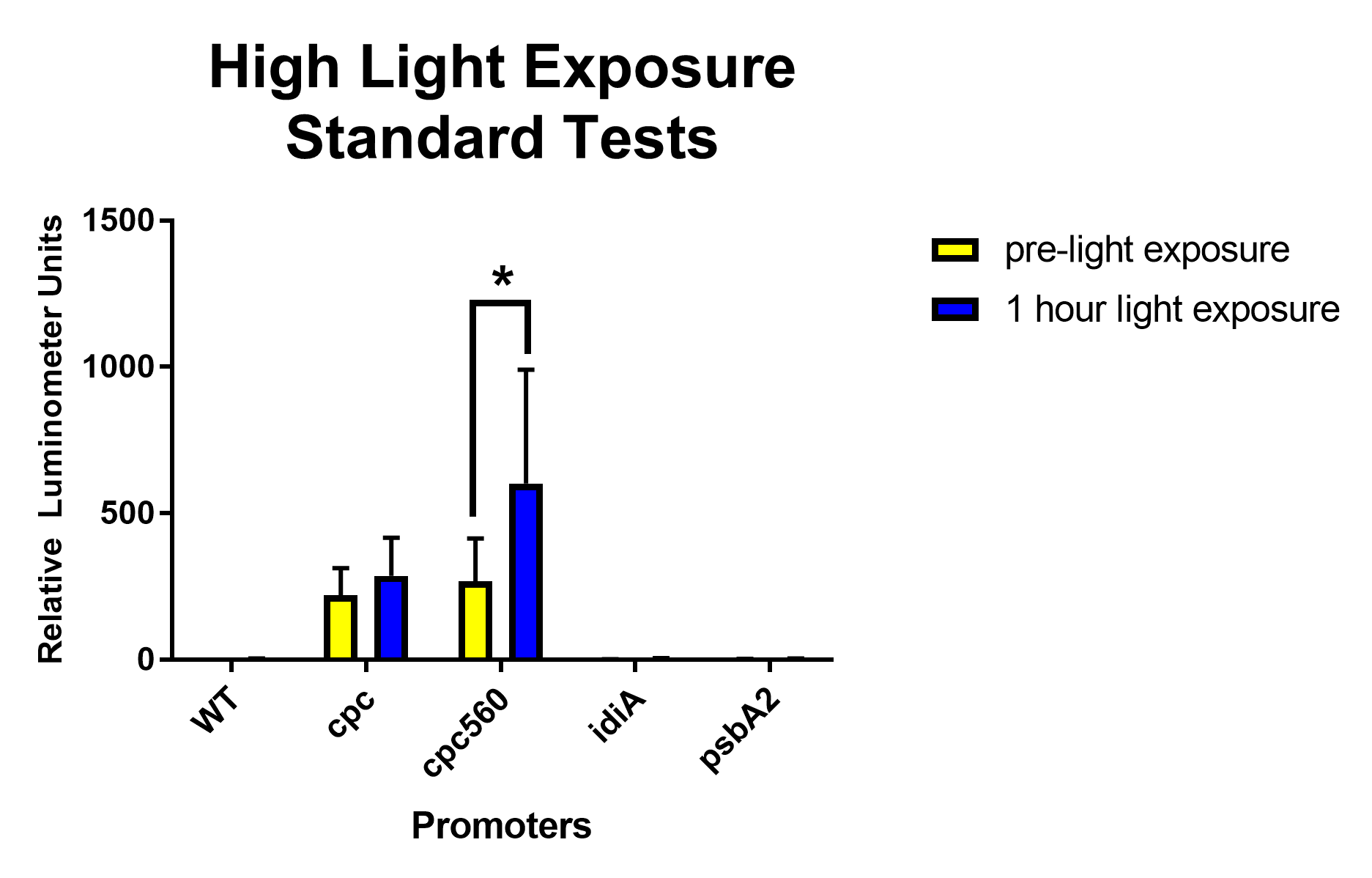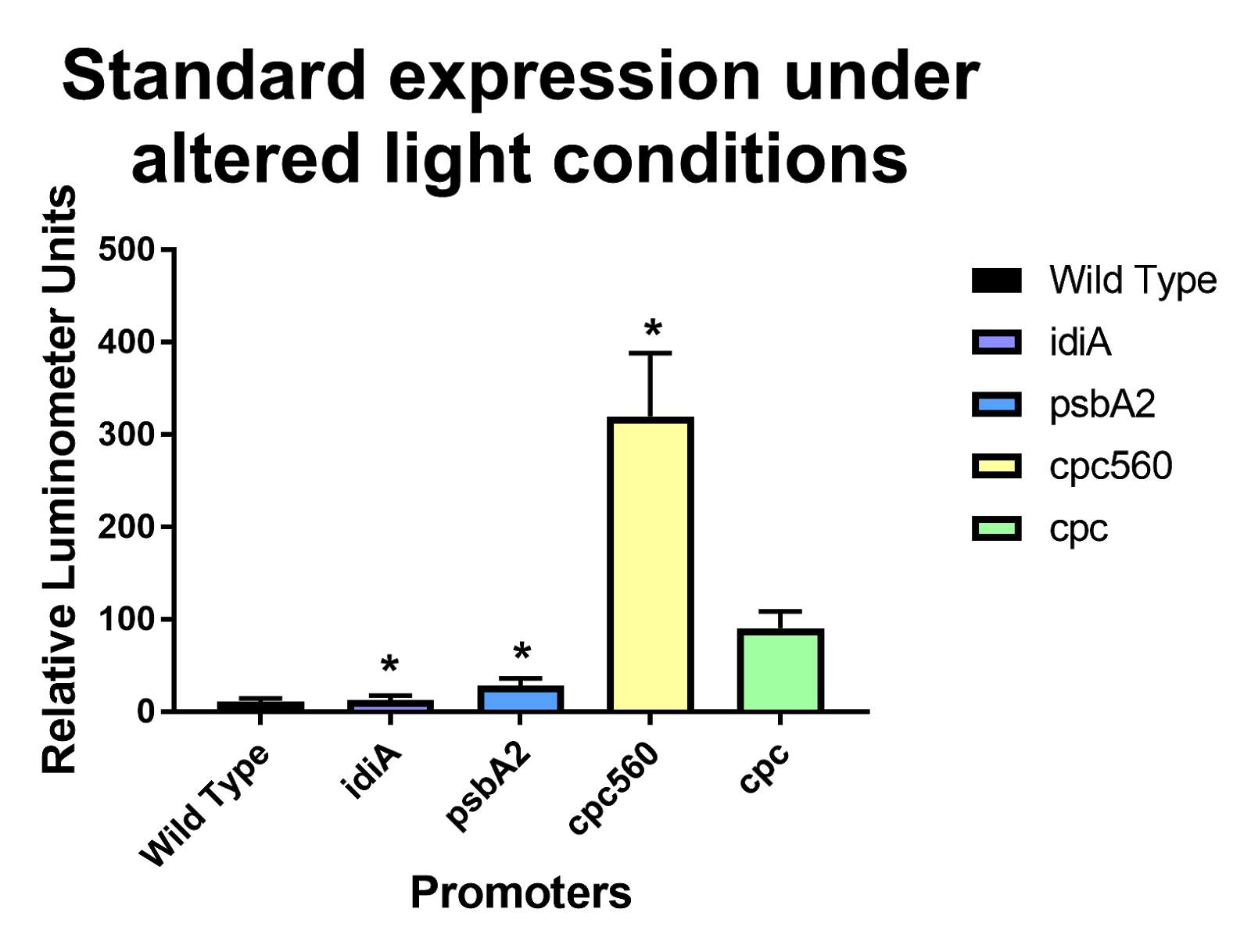Part:BBa_K2596001
PcpcB from Synechococcus elongatus PCC7942
PcpcB is a constitutive promoter from cyanobacteria Synechococcus elongatus PCC 7942.
Usage and Biology
cpcB codes for phycocyanin, a phycobiliprotein complex, and works to harvest light energy before transmitting it to the chlorophylls. The promoter is a strong promoter but also demonstrates expression patterns following circadian oscillations. Studies have found that Pcpc can also be used in E. coli.
Sequence and Features
- 10COMPATIBLE WITH RFC[10]
- 12COMPATIBLE WITH RFC[12]
- 21COMPATIBLE WITH RFC[21]
- 23COMPATIBLE WITH RFC[23]
- 25COMPATIBLE WITH RFC[25]
- 1000COMPATIBLE WITH RFC[1000]
PcpcB1A1 features two promoter sequences within the promoter, both of which were included in the BioBrick. For this promoter, derived from Synechococcus elongatus PCC 7942, we kept about 100 bp of upstream and downstream regions, the latter of which was cropped immediately before the ATG start codon.
Luciferase Assays
Experimental Methods:
In order to test the expression of our promoters, cpc (BBa_K2596001), cpc560 (BBa_K2596006), idiA (BBa_K2596004), and psbA2 (BBa_K2596003), which were incorporated into Dr. Susan Golden’s vector pAM1414 using Gibson assembly, we conducted luciferase experiments. Following Dr. Golden’s procedure, we added 5 µL of decanal to 95 µL of cyanobacteria in each well to induce expression. The decanal acted as a substrate for the bacterial luciferase enzyme, but due to the toxicity, the cells ended up dying, so the data obtained represents the end static expression. For the standard expression experiments for nighttime and daytime, we plated 95 µL of cyanobacteria into a 96 well plate, added 5 µL of decanal, parafilmed the edges and left the plate for 15 minutes before measuring the luminescence in a plate reader. For the high light experiment to psbA2 promoter, we plated 95 µL of cyanobacteria to half of the wells and put them under at least 500 µE of high light in our incubator for 1 hour. Then, we added 95 µL of cyanobacteria not exposed to high light to the other half of the wells and added 5 µL of decanal to all of the wells. Then, we placed the well plate in a plate reader and measured the luminescence. For the iron repressible experiment to idiA promoter, we plated 95 µL of cyanobacteria to half of the wells and exposed them to 2.3 mM of 2,2 dipyridyl for one hour. Then, we added 95 µL of cyanobacteria not exposed to then iron chelating agent to the other half of the wells and added 5 µL of decanal to all of the wells. We placed the well plate in a plate reader and measured the luminescence.
Results:
After removing outliers from the data set using the 1.5(IQR) rule and conducting unpaired T-tests assuming unequal variance, both cpc and cpc-560 showed significant differences for daytime expression compared to wild type [Figure 1]. Compared to cpc, cpc-560 had a significantly higher expression [Figure 1]. In comparison for day compared to night, cpc did not show any significant difference [Figure 2]. On the other hand, cpc-560 showed a significant difference between daytime and nighttime expression [Figure 2]. After removing outliers from the data set using the 1.5(IQR) rule and conducting unpaired T-tests assuming unequal variance, for daytime expression, compared to all other promoters and the wild type, cpc and cpc-560 had significant differences in expression [Figure 1]. For idiA and psbA2, they only had significant differences compared to cpc and cpc-560, and not to each other [Figure 1]. When exposed to highlight, idiA and psbA2 did not show any expression [Figure 3].
After removing outliers from the data set using the 1.5(IQR) rule and conducting unpaired T-tests assuming unequal variance, for expression after iron repression, idiA, psbA2, and cpc560 all showed a significant difference between before iron chelator reagent addition and after [Figure 4]. cpc’s insignificant difference could be attributed to the fact that there were only two cpc samples, as a result of insufficient cyanobacterial growth. The significant decrease in the expression of cpc560, however, as a result of adding the iron chelator, indicates that the cells may have died from prolonged deficiency of ferrous ions, therefore that one hour may have been too long [Figure 4].
When conducting our ferrous standard expression experiments, we had left the untreated cyanobacteria as well as the treated cyanobacteria in our biosafety cabinet, not expecting any major changes in expression due to the light exposure. However, under these light conditions, psbA2 was expressed significantly more than wild type [Figure 5]. We propose that this may be due to our incubators having excess light intensity or red light, which may have inhibited psbA2 expression.
//promoter
| biology | Synechococcus elongatus PCC 7942 |
| device_type | Constitutive Promoter |





